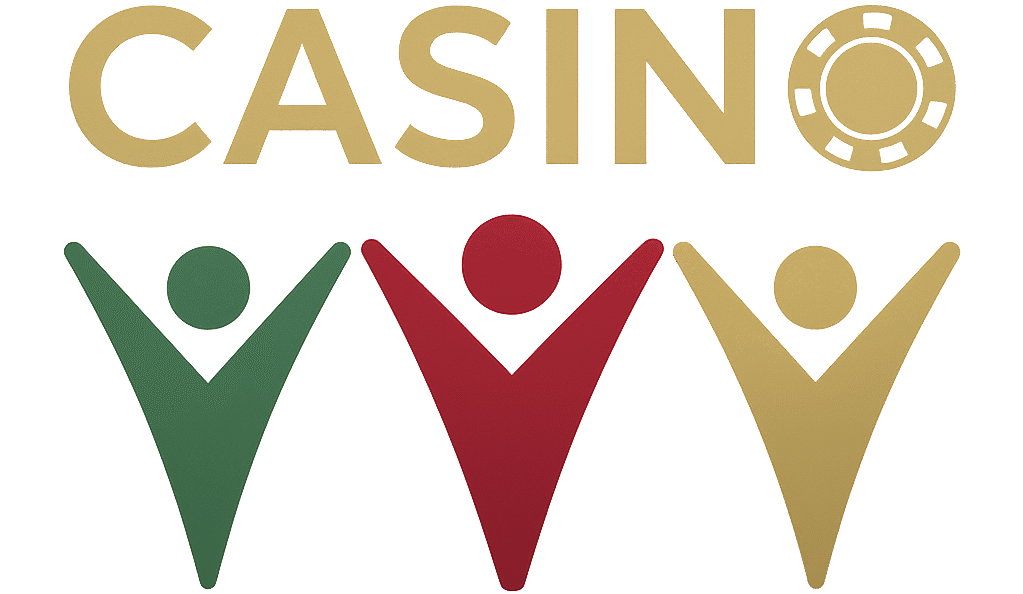
Licensing & Compliance Signals in Prediction Markets vs. Sportsbooks
The juxtaposition of prediction markets vs sportsbooks unveils a nuanced landscape where business models and regulatory frameworks play pivotal roles. Prediction markets, such as Kalshi and Polymarket, offer a distinct approach, enabling participants to trade on the outcome of events. This differs from traditional sportsbooks, which set odds and take bets from customers, often pooling risks. However, the total addressable market (TAM) for prediction markets remains modest compared to the well-established sportsbook industry.
Compliance is a cornerstone for both sectors. The UK Gambling Commission mandates that licensees verify customer identities before gambling activities commence (UK Gambling Commission). This requirement ensures a robust framework for preventing fraud and promoting transparency. Similarly, the Bank Secrecy Act in the US requires financial institutions, including casinos, to report cash transactions exceeding $10,000 and monitor suspicious activities (FinCEN).
Reshaping Demand and Margins
How does the evolution of prediction markets vs sportsbooks reshape demand and margins? While sportsbooks operate with well-defined profit margins based on odds and stakes, prediction markets rely on the liquidity and trading volume of their platforms. The rise of digital platforms has facilitated easy access to both services, yet sportsbooks continue to dominate in terms of financial volume. For instance, DraftKings and Flutter Entertainment reported $25.4 billion and $26.3 billion in comparable OSB handle in the first half of 2025, vastly outstripping the $1.5 billion managed by prediction markets (Casino.org).
Importantly, the geographical distribution of users plays a significant role. With a notable percentage of prediction markets’ traffic coming from states like California and Texas, these platforms generate a run-rate of approximately $1 billion annually, hinting at untapped potential in regions with favorable regulations.
When I reviewed the figures comparing prediction markets to traditional sportsbooks, I was reminded how critical it is to stay realistic. The hype around new technologies can be tempting, but the numbers ultimately teach us about proportion and the importance of measured analysis over short-term excitement.
While the data clearly highlights the gaps between prediction markets and sportsbooks, it is equally important to examine the challenges beneath the surface. The relatively modest volumes of prediction markets are not merely a function of novelty or lack of awareness — they stem from an inconsistent regulatory environment that often treats them more like financial instruments than gambling activities. This dual classification places operators at a disadvantage, as they must comply with both stringent financial oversight and gambling-related expectations. Moreover, the argument around “growth potential” in large states such as California or Texas can be misleading, since any local regulatory delays could stall expansion or render business models unviable. Ultimately, while the vision of prediction markets promises innovation and transparency, in practice it collides with fragmented regulatory frameworks, raising questions about their ability to meaningfully challenge the entrenched position of traditional sportsbooks.
Regulatory Contours Shaping Prediction Markets vs. Sportsbooks
The regulatory environment profoundly influences the dynamics of prediction markets vs sportsbooks. While sportsbooks have navigated through stringent licensing processes in various jurisdictions, prediction markets often encounter a complex web of legal challenges. To be precise, regulatory bodies focus on ensuring fair play and preventing money laundering, enforcing rules that can limit rapid expansion.
On balance, the regulatory landscape remains a double-edged sword, providing security and structure while also imposing barriers to entry. Operators must remain vigilant, adapting strategies to align with evolving regulations, which differ significantly across regions such as the US, UK, and EU.
Comparative Table: Prediction Markets vs. Sportsbooks
| Aspect | Prediction Markets | Traditional Sportsbooks |
|---|---|---|
| Revenue Model | Fees per contract traded | Margin/hold on bets placed |
| Range of Offerings | Broad: politics, finance, entertainment, sports | Primarily sports events, parlays, props |
| User Experience | Trading-style interface, less intuitive for casual players | Betting slips, odds displays, promotions |
| Volume (1H25) | ~$1.5B handle (Kalshi & Polymarket combined) | $25.4B (DraftKings), $26.3B (FanDuel/Flutter) |
| Net Gaming Revenue | ~$40M estimated | $1.88B (DraftKings), $2.35B (FanDuel/Flutter) |
| Regulatory Scope | Federal-level (derivatives exchanges) | State-by-state licensing (US market) |
| Consumer Appeal | Low fees, novelty markets | Familiar formats, bonuses, loyalty programs |
| Risk Profile | Thin liquidity, uncertain profitability | Established models, proven demand |
Implications for Operators and Investors
For operators, the comparison between prediction markets and sportsbooks highlights the need for cautious innovation. While sportsbooks remain the proven revenue driver with established margins, prediction markets offer niche opportunities that could scale if regulatory clarity emerges. For investors, this sector represents a long-term speculative play: growth potential exists, but fragmented oversight and thin liquidity present notable risks. Regulators, meanwhile, will likely continue shaping the trajectory by balancing innovation with consumer protection. Ultimately, success in this evolving space will depend on aligning strategies with compliance, market demand, and realistic profit expectations.
Ultimately, the interplay between prediction markets and sportsbooks reflects broader trends in digital commerce and regulatory oversight. As both industries continue to evolve, staying informed about these shifts remains crucial for stakeholders. Stay ahead with prediction markets vs sportsbooks insights — follow CasinoVVV’s editorial coverage.
What is a prediction market?
A prediction market is a platform where participants trade contracts based on the outcomes of future events, with prices reflecting the crowd’s collective forecast.
How does the business model of sportsbooks differ from prediction markets?
Sportsbooks make money by setting odds and taking a margin on bets, while prediction markets facilitate trading between users, earning through transaction fees.
What are the regulatory challenges unique to prediction markets compared to sportsbooks?
Prediction markets often face stricter regulatory scrutiny due to their potential overlap with financial markets, whereas sportsbooks are typically regulated under gambling laws.
Law, Policy, And The Space In Between

Retention & Loyalty Levers in Law, Policy, and the Space in Between
The intersection of law vs policy gaming offers unique opportunities to leverage retention and loyalty strategies. While laws set the boundaries for what is permissible, policies shape the player experience within those limits. This dynamic interplay allows casinos to design environments that not only comply with regulations but also enhance player engagement.
For instance, while legal frameworks may mandate specific payout percentages, policies can dictate how frequently bonuses are offered. By aligning policy with legislative requirements, casinos can optimize player satisfaction and retention. How can operators navigate these complex layers effectively? A clear understanding of both legal and policy constraints is crucial.
Workflow, Staffing, and Vendor Choices
Operationalizing a casino’s workflow requires a nuanced approach to staffing and vendor management. Laws often define minimum staffing levels, especially in areas like security and compliance. Policies, on the other hand, determine how these staff members interact with patrons. This balance ensures not only legal compliance but also a seamless customer experience.
Choosing the right vendors is another critical aspect. While legal requirements may dictate certain security standards, policy decisions influence which technology partners are selected to meet these standards. By stress-testing various vendor solutions, casinos can ensure that their operational needs align with both legal obligations and customer expectations.
Law vs Policy vs The Space In Between (Casino Context)
| Dimension | Law | Policy | The Space In Between |
|---|---|---|---|
| Definition | Enforceable rules created by governments or regulatory authorities. | Internal or organizational guidelines that shape operations within legal boundaries. | Interpretive area where flexibility exists between strict legal mandates and discretionary policies. |
| Casino Example | A regulation by the Nevada Gaming Control Board requiring minimum payout percentages on slot machines. | A casino’s internal decision to offer daily free-play bonuses to enhance customer engagement. | Adjusting bonus frequency so it complies with payout laws but still meets marketing goals. |
| Focus | Compliance and enforceability. | Customer experience and operational strategy. | Balancing compliance with innovation and player loyalty. |
| Enforcement | Backed by legal institutions, violations may result in fines or license suspension. | Enforced internally by management; violations affect customer satisfaction and brand reputation. | No formal enforcement, but requires strategic judgment to avoid legal breaches or customer distrust. |
| Impact on Players | Ensures fairness, transparency, and legal protection. | Shapes the perception of value and service quality. | Allows tailored experiences while respecting the law. |
| Risk of Misalignment | Legal penalties or loss of license. | Poor retention or reputational harm. | Confusion or disputes if policies overstep or contradict regulations. |
📌 Takeaway:
-
Law sets the hard boundaries.
-
Policy defines how casinos operate within those boundaries.
-
The Space In Between is where casinos innovate, finding room to improve player retention and loyalty without crossing legal lines.
Player Behavior: Practical Takeaways for Law, Policy, and the Space in Between
Understanding player behavior is pivotal for crafting effective policies that comply with the law. Casinos can map out player journeys to identify key touchpoints where policy can enhance the gaming experience. For example, a policy might allow more personalized interactions at these touchpoints, which, while not legally required, can significantly boost player satisfaction.
Importantly, data analytics play a crucial role in this process. By analyzing patterns, casinos can operationalize insights to refine their offerings. This is not a legal opinion, but a strategic approach to harmonize player experience with legal and policy frameworks. The goal is to create a gaming environment that respects legal boundaries while prioritizing player enjoyment.
What is the difference between law and policy?
Law refers to rules that are enforceable by institutions, while policy is a set of guidelines or principles that inform decision-making.
How do laws influence the creation of public policy?
Laws provide the legal framework within which policies are developed, ensuring policies are enforceable and aligned with societal norms and values.
What role does the ‘space in between’ play in the relationship between law and policy?
The ‘space in between’ allows for interpretation and flexibility, enabling policymakers to adapt laws to specific contexts and evolving societal needs.
Written by Oren Dalal, Founder of CasinoVVV
Oren Dalal, founder of CasinoVVV, has been active in the internet industry since 1996. With nearly three decades of experience in digital marketing, affiliates, and online gaming regulation, he provides trusted insights into global casino trends, licensing, and compliance.
Read also: Trenton’s Political Gamble: The Push For Expanded Gaming In New Jersey • Taxation In Online Casinos: Regulatory Impact On Operators
Read also: Green Energy Casinos And ESG • AI-Powered Responsible Gaming Tools
